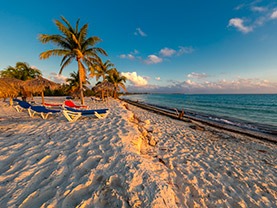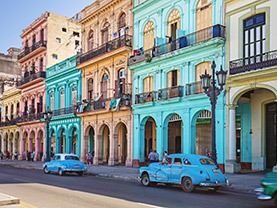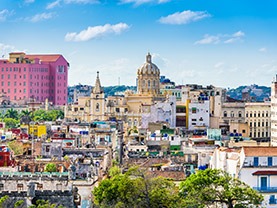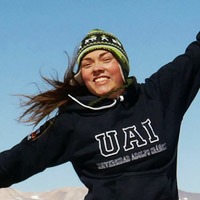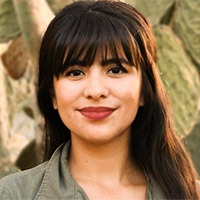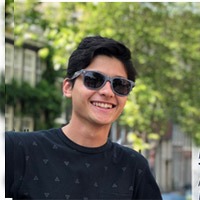
Contemporary Cuba: Collective Visions
La Habana, Cuba
Program Facts
Program Type: UA Faculty-led
Credit Type: UA Direct Credit
Level of Study: Graduate , Undergraduate
GPA: 2.5
Class Eligibility: Graduate , Junior , Senior , Sophomore
Language of Instruction: English , Spanish
Program Open To: UA and Non-UA Students
Coordinator: David Wray
Explore Contemporary Cuba: Collective Visions
Available Summer 2025!
During a three week program to this culturally rich island nation, the student will develop their Spanish skills while earning upper-division or graduate credits. This interdisciplinary field-based program uses a social justice lens to examine Cuba's recent history and contemporary processes of change and continuity, focusing on environmental, political and socioeconomic transformations. The course includes in-country transportation, meals, housing, site visits and workshops, as well as excursions to beaches and neighboring provinces.
Courses are interdisciplinary and combine classroom lectures with workshops and experiential learning. Prior to departing, students will take and online course designed to prepare them to better understand and interpret the complexities of the Cuban reality that they will experience. This course will use video, online discussion, and background readings, allowing students to engage fully when in-country. While in Cuba, courses will include site visits, interactions with Cuban experts in a variety of fields, and seminar discussions. Two four-day field trips are also scheduled to western and central Cuba. Participants will interact with Cubans from different walks of life, ranging from academia and the arts through politics, sustainable farming, and small business owners.
Please note, students may enroll in a maximum of 6 credits total for this program selecting from the options below (400-level course are for undergrad students, 500 level are for grad students).
Courses offered:
- LAS 495G/595G Special Topics in Latin American History: History of Cuba (3 credits)- This international field class provides three hours of Latin American Studies credit in the University of Arizona’s Center for Latin American Studies.LAS 495G is the undergraduate version; LAS 595G is intended for graduate students. Both courses convene at the same time, with additional research expectations for graduate students.
- GEOG 455/555 Advanced Regional Study: The Political and Economic Geography of Cuba (3 or 6 credits)- This international field class provides three hours of geography credit in the University of Arizona’s School of Geography and Regional Development (can be repeated). GEOG 455 is the undergraduate version; GEOG 555 is intended for graduate students. Both courses convene at the same time, with additional research expectations for graduate students.
- LAS 462/562-A, B, or C (Beginning, Intermediate, or Advanced) Special Topics in Contemporary Latin America: Language and Culture (3 credits)- The course is tailored to the student’s Spanish proficiency. Students will be assigned a level according to their language skills.
- Independent Study 399: Students can also sign up for independent study in LAS or GEOG
Faculty: Dr. Dereka Rushbrook teaches in the School of Geography and Development. Her teaching and research focus on Latin America, including Cuba. She first visited the island in 2008. Dr. Marcela Vásquez-León is an associate professor in the School of Anthropology and with a joint appointment in the Center for Latin American Studies. She has extensive experience teaching and conducting research about contemporary Latin America, including Cuba.
The program is based in Vedado central business district, an urban neighborhood in the city of Havana, Cuba. Bordered on the east by Central Havana, and on the west by the Miramar / Playa district. Vedado is the most modern part of the city, developed in the first half of the 20th century. The main street running east to west is Calle 23, also known as "La Rampa". The northern edge of the district is the waterfront seawall known as the Malecón, a famous and popular place for social gatherings in the city. Excursions The program includes daily field visits throughout Havana and its environs, as well as travel to Pinar del Rio, Santa Clara, Cienfuegos, Trinidad, Varadero and the cayos. These trips immerse students in the complexities of everyday urban and rural life and provide a deep appreciation for the cultural and political complexities of the island.
Good To Know
LGBTQ+ Equality Index rating: Cuba rates 78/100 (with 100 being the most equal) on Equaldex’s LGBTQ+ Equality Index.
Global Peace Index rating: Cuba ranks 99/163 in the Global Peace Index. The lower the score, the more peaceful the country.
Languages Spoken: Spanish
Home stays with families in the Vedado neighborhood. The program is based in Vedado central business district, an urban neighborhood in the city of Havana, Cuba. Bordered on the east by Central Havana, and on the west by the Miramar / Playa district. Vedado is the most modern part of the city, developed in the first half of the 20th century. The main street running east to west is Calle 23, also known as "La Rampa". The northern edge of the district is the waterfront seawall known as the Malecón, a famous and popular place for social gatherings in the city.
Request More Information
Please enter your contact information and a member of the Study Abroad team will contact you.



